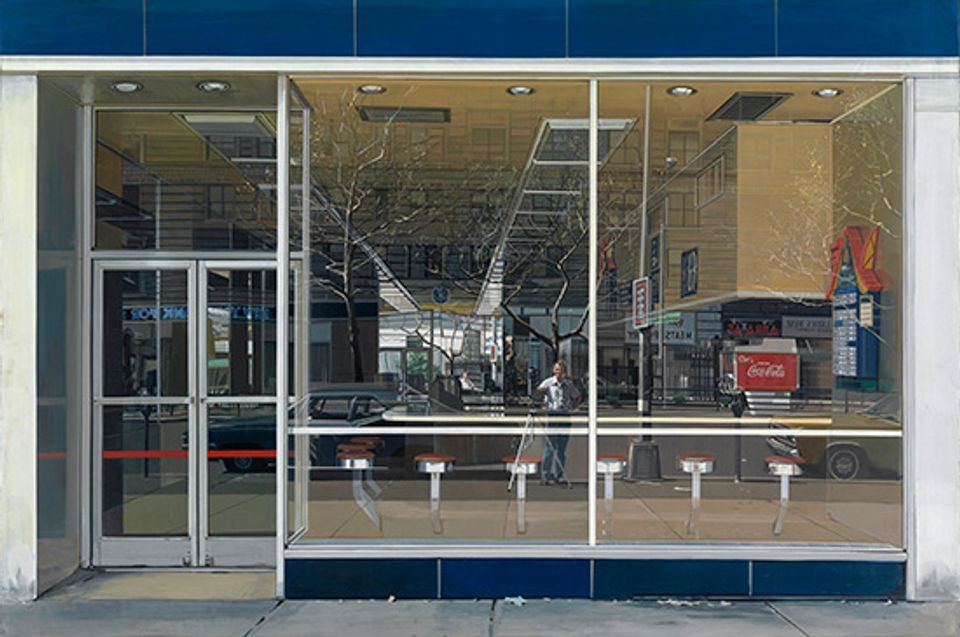

"Richard is in love, obviously, with the way the world looks, but he's also in love with the act of painting and the magic of the act of painting," said independent curator and art historian Patterson Sims during "An Evening with Richard Estes" last week at American Art's McEvoy Auditorium. Sims is co-curator of Richard Estes' Realism, the exhibition of the celebrated photorealist painter that originated in Portland, Maine and recently opened in the museum's first floor galleries, the final venue of a well-received, two-museum tour. The exhibition is the first complete overview of Estes' work in the U.S. since 1978.
Before Estes joined him for an onstage conversation, Sims took us on a journey through highlights of Estes' career. Projections of early works show the artist finding his footing in realism, having his first show in New York City in 1968, when he was in his mid-thirties. As Sims explained, that was a time when an artist could knock on gallery doors and show his or her work. Then, New York galleries were primarily situated between 57th and 86th streets. After going from gallery to gallery, Estes came to the last street and the last gallery, the Allan Stone Gallery. Fortunately, Stone said yes and agreed to represent Estes and give him a show.
Estes works from his own photographs, and in some of his iconic works, you can see his reflection in plate glass windows, the reflection of a man with a camera and tripod. Reflection is also key to Estes' work, as water, glass, and chrome often act as conduits for images to be seen in multiple perspectives on a single canvas. But it's an abstracted reality, as Estes often combines elements from different photographs to create a single image.
In the Q&A that followed the talk, we learned that many of Estes' compositions are oil on top of an acrylic base; that he's not a big fan of Pop or abstraction; and that he now uses a digital camera and manipulates his photos in PhotoShop. When it was time for self-reflection, Sims asked how he became an artist, to which Estes replied, "I couldn't do anything else. I like being an artist because I can do it myself."
Richard Estes' Realism remains on view at the museum through February 8, 2015. To find out more about the artist view the webcast of "An Evening with Richard Estes."

















